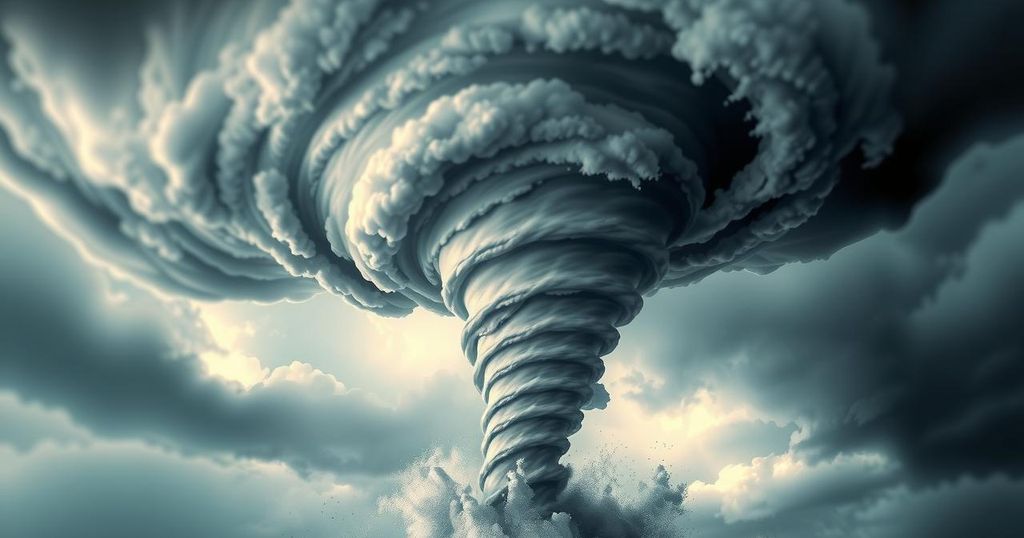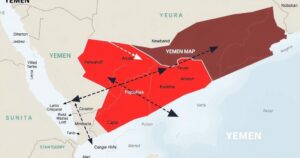Ten Essential Facts About Tornadoes and Their Destructive Power

Tornadoes are among nature’s most destructive forces, with wind speeds reaching 300 mph and devastating impacts on communities. Key historical events include the deadliest tornado, the Tri-State Tornado of 1925, and the record-breaking 2013 El Reno tornado. Understanding their behavior, peak seasons, and geographical patterns is essential for preparedness, especially as tornado occurrences are rising in areas outside of traditional Tornado Alley.
Tornadoes represent some of the most potent manifestations of natural disaster, characterized by towering columns of air capable of reaching ferocious wind speeds upwards of 300 mph. To safeguard lives and property, understanding factual information about these phenomena is crucial, particularly as peak tornado season approaches in spring. Tornadoes can devastate entire neighborhoods almost instantaneously, thus awareness and preparedness are essential for effective response.
Historically, the Tri-State Tornado, which occurred on March 18, 1925, remains the deadliest tornado in U.S. history, with a path covering 219 miles across southeastern Missouri, southern Illinois, and Indiana. This catastrophic event resulted in the loss of nearly 700 lives and is noted as the longest-lasting tornado on record, according to the National Weather Service (NWS).
On May 31, 2013, a tornado touched down near El Reno, Oklahoma, achieving a remarkable width of 2.6 miles and wind speeds of 302 mph. This tornado surpassed the previous record for width held by another tornado in Hallam, Nebraska, that was 2.5 miles wide. Such extreme tornadoes highlight the destructive potential of these weather phenomena.
The worst tornado outbreak recorded took place on April 27, 2011, resulting in 207 tornadoes striking the Southern U.S. within just one day, with fatalities totaling 319 and injuries surpassing 2,800. Among these tornadoes, four were classified as EF5 on the Enhanced Fujita Scale, indicating their exceptional severity.
The life span of tornadoes can range from a few moments to over an hour, depending on their intensity and the environmental conditions present. However, most tornadoes tend to be on the ground for only around five minutes, according to data from NOAA’s National Severe Storms Laboratory.
Globally, tornadoes have occurred on every continent except Antarctica, which lacks the warm, moist conditions necessary for their formation. Though Alaskan tornadoes have been documented, they are generally weak and of short duration, resulting in minimal damage.
Powerful tornadoes can occur outside the well-known Tornado Alley. For example, a severe tornado outbreak on May 31, 1985, affected Ohio, Pennsylvania, and New York, leading to 89 fatalities and significant damage, with a particularly destructive F5 tornado spanning a 47-mile path.
There is also a secondary area known as Tornado Alley located in the southern United States, which includes states such as Louisiana and Mississippi. This region benefits from the warm, moisture-rich air provided by the Gulf of Mexico, which fuels tornado formation, and demonstrates an increasing frequency of severe tornadoes in recent years.
The peak season for tornadoes is during spring, particularly in March, April, and May. An analysis by AccuWeather identified May 25 as the most active day for tornado occurrences based on historical data between 1950 and 2020. Understanding this seasonal pattern is vital for preparedness and response.
In summary, tornadoes are highly destructive weather events that can cause extensive damage and loss of life. The Tri-State Tornado of 1925 remains historically significant in terms of fatalities, while modern records such as the El Reno tornado illustrate the ongoing threat these storms present. Increasing occurrences outside of traditional Tornado Alley and the importance of seasonal awareness underscore the need for continued education and preparedness to mitigate risks associated with tornadoes.
Original Source: www.accuweather.com






